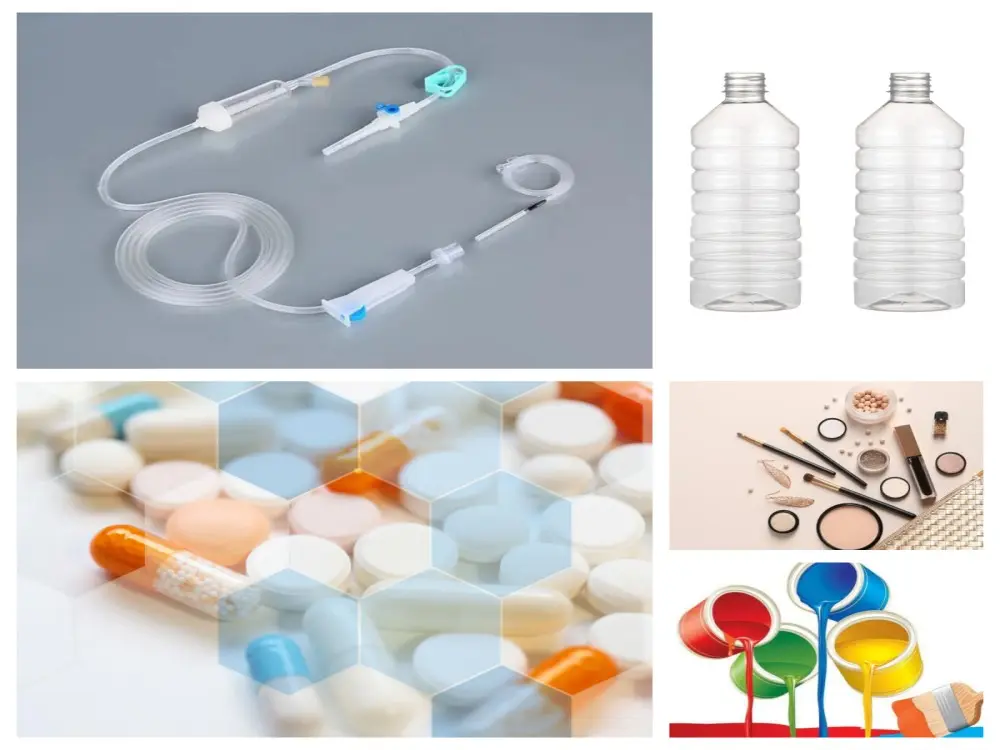

1. Furfural is an excellent organic solvent, which can well dissolve aromatic hydrocarbons and olefins. Therefore, it is widely used in refining lubricating oil, improving diesel oil quality, refining animal and vegetable oils, and making resins and waxes.
2. Furfural can also be used as raw material for production and reprocessing, such as production of furfural resin and production of furfural hydrogenation products. The derivatives of furfural have high added value. Furfural is the raw material for the production of furfural alcohol. Furfural is hydrogenated to furfural alcohol under catalyst conditions, and furfural alcohol is the main raw material for the production of furan resin, widely used in machinery and chemical industry;
3. Furfural is also widely used in medicine, antiseptic, bactericide, rust remover and cosmetics industries.
4. Furfural is used as raw material for organic synthesis, as well as synthetic resin, varnish, pesticide, medicine, rubber and paint.
5. Furfural is mainly used to prepare furfuryl alcohol, furoic acid, tetrahydrofuran γ- Industrial solvent of pentolactone, pyrrole, tetrahydropyrrole, etc. and used as analytical reagent.
6. Furfural is a very important organic chemical intermediate, which can be used to prepare pentanediol, acetylpropanol, pentadiene, ketones, methyl tetrahydrofuran, etc. The 1,6-hexanediamine [H2N - (CH2) 6-NH2] prepared from furfural is the raw material for nylon 66; Furan prepared from furfural can also be made into succinal by electrolytic reduction, which is the raw material for the production of atropine.

1. As a new type of PVC auxiliary heat stabilizer, Dibenzoylmethane can absorb ultraviolet light above 290nm, has high light transmittance, is non-toxic and tasteless, and can be used together with solid or liquid calcium/zinc, barium/zinc and other heat stabilizers to improve the initial coloring of PVC Performance, transparency and long-term stability, effectively improve the "zinc burning" phenomenon in the processing of polyvinyl chloride products, promote the replacement of calcium/zinc composite stabilizers, and are widely used in the manufacture of PVC mineral water bottles, infusion sets, infusion tubes, children Toys and other medical, food packaging and other non-toxic transparent PVC products.
2. Used for analyzing reagents, testing carbon disulfide and thallium, measuring uranium by weight, measuring U+4 by photometry, and extracting silver, aluminum, barium, etc.
3. Dibenzoylmethane is widely used in the synthesis of high-efficiency herbicides, ultraviolet absorbers, cosmetic sunscreens, and high-efficiency rare earth organic complex fluorescent materials and other fields.




1. Hydroxyethyl cellulose is generally used as thickening agent, protective agent, adhesive, stabilizer, and additive for preparing emulsions, jellies, ointments, lotions, eye cleaning agents, suppositories and tablets, as well as hydrophilic gel, skeleton materials, preparation of skeleton sustained release preparations, and as stabilizer in food.
2. Hydroxyethyl cellulose is used as sizing agent in textile industry, adhesive, thickening, emulsifying and stabilizing agent in electronic and light industry sectors.
3. Hydroxyethyl cellulose is used as a thickener and fluid loss reducer for water-based drilling and completion fluids, and has obvious thickening effect in brine drilling fluids. It can also be used as a fluid loss reducer for oil well cement. It can be cross-linked with multivalent metal ions to form gel.
4. Hydroxyethyl cellulose is used for exploitation of oil-based gel fracturing fluid by fracturing method, as well as dispersant for polymerization of polystyrene and PVC. It can also be used as emulsion thickener in paint industry, humidity sensitive resistor in electronic industry, cement retarder and water retention agent in construction industry. Ceramic industry glazing and toothpaste adhesive. It is also widely used in printing and dyeing, textile, paper making, medicine, health, food, cigarettes, pesticides and fire extinguishing agents. is used for exploitation of oil-based gel fracturing fluid by fracturing method, as well as dispersant for polymerization of polystyrene and PVC. It can also be used as emulsion thickener in paint industry, humidity sensitive resistor in electronic industry, cement retarder and water retention agent in construction industry. Ceramic industry glazing and toothpaste adhesive. It is also widely used in printing and dyeing, textile, paper making, medicine, health, food, cigarettes, pesticides and fire extinguishing agents.
5. Hydroxyethyl cellulose is used as surfactant, colloid protective agent, emulsification stabilizer for lotion such as vinyl chloride and vinyl acetate, as well as viscosifier, dispersant and dispersion stabilizer for emulsions. It is widely used in coating, fiber, dyeing, paper making, cosmetics, medicine, pesticide, etc. It also has many uses in oil exploitation and machinery industry.
6. Hydroxyethyl cellulose has surface activity, thickening, suspension, adhesion, emulsification, film formation, dispersion, water retention and protection functions in drug solid and liquid preparations.
7. Hydroxyethyl cellulose is used as dispersant for the production of petroleum water-based gel fracturing fluid, PVC, polystyrene and other polymerization. It can also be used as emulsion thickener in paint industry, cement retarder and water retention agent in construction industry, glazing agent and toothpaste adhesive in ceramic industry. It is also widely used in printing and dyeing, textile, paper making, medicine, health, food, cigarette and pesticide industries.

